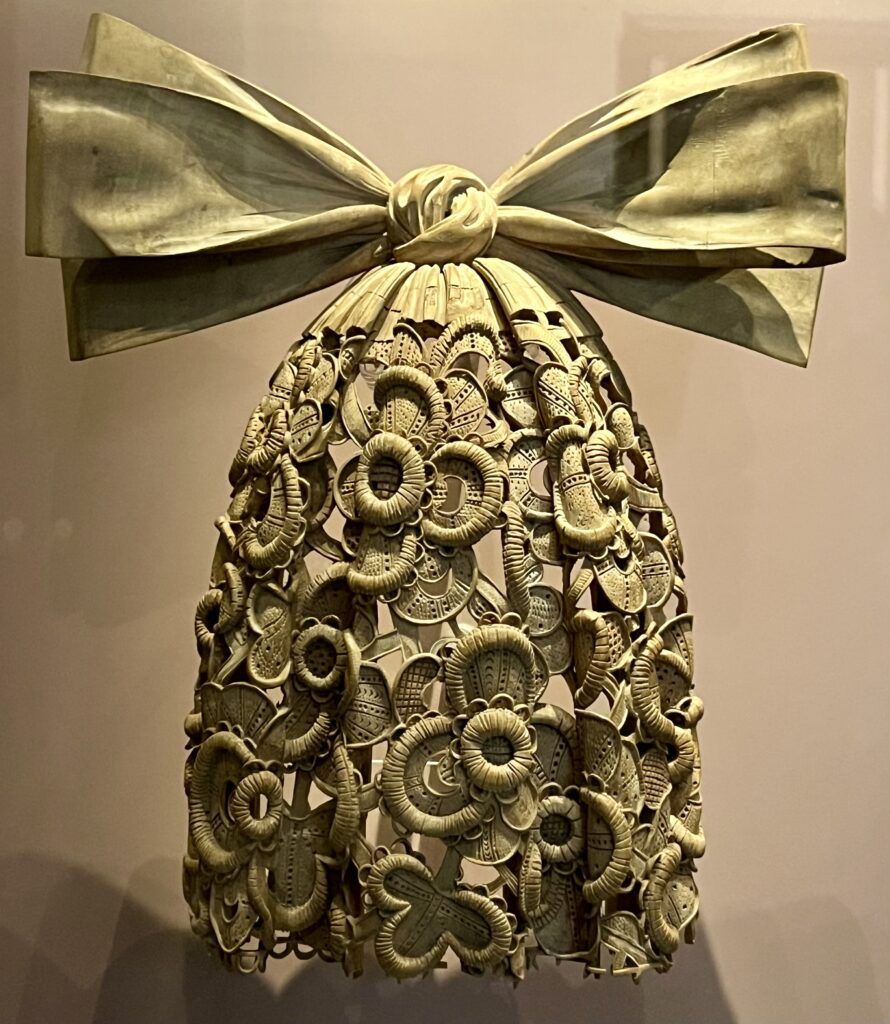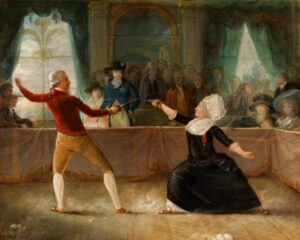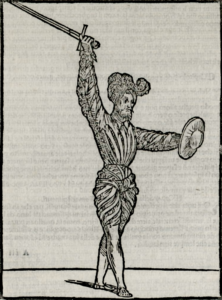The AI revolution has been growing behind the scenes for a very long time, and now with chat bots like Chat GPT and image bots like Midjourney, the iceberg is breaking the surface. It puts me in mind of the machine-tool revolution in woodwork that occurred in the 60s and 70s, and the quartz revolution in watchmaking around the same time. The short-term result of both of these was that a lot of old-fashioned craftspeople went out of business, and it became much easier for lower-skilled workers to make decent quality furniture and watches, and much cheaper for ordinary people to buy a functional chair or timepiece.
What we see in both cases, and indeed in just about every case I can think of where new technology comes along, was a change in the market, which became much more democratic, and much broader, with a lower low end, and a much higher high end.
Let’s start with the woodwork example, as woodwork is millenia older than horology.
Table of Contents
ToggleThe Craft of Woodwork
There is nothing in woodwork that you can’t build with just hand tools. Ships? Check. Lace cravat in limewood? Check.
This is Grinling Gibbons’ cravat, hand carved in about 1690, currently held in the Victoria and Albert museum.
You can see how he (probably) did it in this astonishing video of Clunie Fretton’s partial reproduction.
Until recently, every woodworking project, including that cravat, went from tree to finished product with practically no mechanisation. All power was muscle power, human or animal. The tree was felled with axes, split with wedges, sawn by hand, planed by hand, and finished by hand. The circular saw dates back to the 18th century, when it was driven by wind or water power, and used in saw mills to cut trunks into planks, but it took a century or so to become widespread.
Mechanisation first occurred at the largest scales of woodworking: tree felling with chainsaws, ripping with giant circular saws, the planer-thicknesser (known as a jointer-planer in the US), and so on.
At one extreme, we have craftspeople making extraordinary things out of wood entirely with machines; at the other, we have craftspeople making extraordinary things out of wood with no machines at all. One great example of the latter is Tom Fidgen, author of a wonderful book The Unplugged Woodshop, who doesn’t use any machines at all! Yet he does run an online woodworking school… I wonder which makes more money?
At the level of the individual artisan working at the bench, the cataclysm of modernity didn’t really strike until the 1960s, with the development of smaller electric tools such as hand-held routers. This quickly lead to the demise of many companies making professional grade hand tools. It became very difficult to buy a decent saw or plane; all you could get was mass-produced low-grade wobbly crap. Just compare a Record plane from 1950 with one from 1975, and the cost-cutting is obvious. Plastic handles, parts made of bent mild steel rather than cast, etc. This was not the companies’ fault: the market for the high quality stuff just wasn’t big enough any more to be profitable.
But from the ashes of rubbish hand-tools, phoenixes have emerged, beginning with Lie-Nielsen Toolworks, founded in 1981. The top end of the market is now way, way, higher than it ever was before. Such as this saw from Skelton Saws:

And planes from Karl Holtey, that begin at around £1k, if you can find them. Most are much more expensive.

Which make my beautiful, immaculate, Florip saws look very cheap! I have five: their bench saw, tenon saws both rip and crosscut, and dovetail saws rip and crosscut. Oh my goddess, these are amazing, and all five together cost about the same as one Skelton. But of course, about ten times what I'd pay for the cheapest options. Likewise, you can get a really high end plane from Clifton (an old brand that was going bankrupt, and was rescued by one of the few surviving handsaw makers in the UK, Thomas Flinn), Lee-Nielsen, Veritas, etc for a tenth of the price of the equivalent Holtey, but yes, about ten times what the crap in the big box store will cost you.
You can get an idea of what it takes to make a really cheap plane work properly in this video by Rex Krueger.
Putting these tools to use, most craftspeople fall somewhere in between the high-tech and the hand tool-only. I have always had a romantic and aesthetic preference for hand tools, so avoid machines where practical. But here’s the thing: from the perspective of the end-user, it is impossible to distinguish a board that has been dimensioned by machine and finished by hand, and one from which every shaving was taken away through manual labour.
There is no difference- you only get to see the final surface. Likewise, an article written by ChatGPT will be like a rough-sawn board. Usable for some applications, but by the time a craftsperson has planed it smooth, sanded it, and applied some polish, nobody will know if she wrote it from scratch, or edited it from an AI generated draft. Most end-users, most of the time, couldn’t care less how their book was written or their furniture was made. It either meets spec, or it doesn’t.
It’s also worth noting that mastering woodworking machines is in its own way as demanding and difficult as mastering hand tools. You can’t just dump a load of wood in the machine shop, turn everything on, and hey-presto! Out comes new furniture. It’s just that it expands the lower end, and speeds up production: less-skilled workers can get useful work done, and more skilled workers can work dramatically faster, especially in getting sawn lumber dimensioned and planed all round.
The major downside of machines in woodworking (other than the noise and the dust) is that one can tend to make the furniture that the machine can handle. The machines become a limiting factor. If you can’t fit a board onto your planer, you might rip it down the middle so it will… when cutting dovetails, I usually lay out the tails so close together that it’s impossible to cut them with a router (the cutter shank won’t fit through the gap between the tails).
Anyone who knows about such things will immediately see that these were hand-cut. This has nothing to do with practicality, and everything to do with satisfaction. It’s sticking one finger up to the machine-tool revolution, and quite silly because a) it doesn’t make the joint stronger and b) I’m perfectly happy to use machines for other things. The groove for the drawer bottom in this very drawer was cut with a router, and I used a planer-thicknesser to bring the front and sides to thickness.
If you are unfamiliar with woodworking machines, you can see a state of the art modern set-up here in Matt Estlea’s overview video of the making of his Roubo-style workbench, “Bertha”.
And compare that to his traditional dovetail cutting tutorial.
Same craftsman, different jobs, so different tools.
Of course, most furniture isn’t made by any kind of craftsperson. It comes from factory assembly lines, in massive quantities at an extraordinarily low cost. It is literally cheaper to buy a table from IKEA than it is to buy the wood to make the same table yourself. The same people who are (probably rightfully) worried about how AI will steal their jobs are almost certainly wearing clothes made on machine looms, and using furniture mass-produced by industrial processes. And probably wearing quartz watches.
The Craft of Horology
Speaking of watches, here is one of the best watches in the world:

The Casio AE1500. Yours for about £30. Reliable, waterproof, multi-function, does everything you could possibly ask of a watch… Except make your craftsmanship spidey-sense tingle with glee. Which this handmade IWC perpetual calendar watch (you won’t need to adjust the date, month, or moon calendar until the year 2100) certainly does.

Get this: using only gears, springs, and levers, this watch can handle date changes, including leap years. It’s all 100% mechanical. The mind boggles. Is that worth paying about a thousand times as much for the watch? Some people certainly think so. The Casio does all that the IWC can do with ease, and more, at about a thousandth of the cost. Though, if I’m 100% honest, if money were no object, the high-end watch I’d get would be the Rolex GMT Master II, with the pepsi bezel. What can I say? The heart wants what it wants. Rolex got me with their advertising in the 80s, and I’ve never quite lost the urge. I found this genuine ex-dealer wall clock on Etsy, and I love it to bits:
Getting back on track now (please admire the deftness with which I didn’t go down the wooden timepiece rabbit hole), the quartz revolution almost destroyed the Swiss watch industry. Before those cheap, reliable, tacky watches came along, all watches were purely mechanical. The fancy ones were self-winding, and had interesting complications like GMT functionality and/or showed the date, but that was about it. And when cheaper, more reliable, tackier watches became available, there was a winnowing of watch companies that is heartbreaking to contemplate. In 1970, there were approximately 1600 Swiss watchmaking companies. By 1983, there were about 600 left.
One brand that made a tremendous success out of cheap quartz watches was Swatch. They went on to buy up some of the struggling fancy brands (Breguet, developer of the Tourbillon escapement (patented in 1801). Breitling. Even James Bond’s Omega) and made them profitable. At the same time, Patek Philippe, Audemars Piguet, Vacheron Constantin, and Rolex doubled down on the exclusive luxury end of the market and went from strength to strength, because they are not competing on price or time-keeping accuracy. They are competing on craftsmanship and artistry. It’s worth noting that Rolex and Patek Philippe particularly were actively developing their own quartz movements in the early days, so they were not in any sense Luddite about their approach to watchmaking. But they recognised a fight they'd never win, and so chose new ground to compete on.
Since the quartz apocalypse, there have been some astonishing new entrants into the field, such as Richard Mille and Kari Voutilainen (whose watches start around the 200 thousand dollar mark, about ten times what the IWC watch costs), or Finnish watchmakers S.U.F Helsinki, whose watches start at about a tenth of the IWC. These newcomers are not just filling the gap left by the older brands that failed and were bought up; the market for this kind of art/craft is much, much, larger than it ever was. In terms of price, it goes approximately like so: Casio: x 100 = S.U.F Helsinki: x 100 = Voutilainen. The gap between the bottom end and the top is almost infinite: there are new watches by new makers out there that cost millions.
People will still pay for craftsmanship
What does all this have to do with AI? Well, it’s the power-tool, quartz movement, equivalent for knowledge workers of all kinds, including programmers, graphic designers, and writers. Bill Gates reckons (in his article The Age of AI Has Begun) that this is the biggest thing since the graphical user interface, and he’s pretty well placed to make that assessment. The article is relatively fair-minded, and highlights some pros and cons. Pros include better cheaper healthcare, cons include the risks of AIs being misused by the malicious, and major disruption to the livelihoods of knowledge workers.
Here is what will happen, because it’s what always happens:
The market will split. There will be some people out of work because AI does their job better and faster than they can, and they can’t adapt fast enough. There will be some people who successfully position themselves as the hand-tool/mechanical watch artisan equivalent: poets, literary fiction writers, and so on. And there will be most people in between who learn to use the new tools, and use them to make more stuff, faster, and better.
There is space in the market for the cheap, practical, gets the job done for not much money solution. And there is space for the artisanal, bespoke, gets the job done for a lot more money solution.
On the left of my wall clock, there’s a version of my publishing imprint Spada Press’s logo, done on vellum, by the incomparable Nora Cannaday (whom I interviewed in episode 28 of The Sword Guy podcast).

It’s a one-off work of art. I also have this one, that I use in all my books:
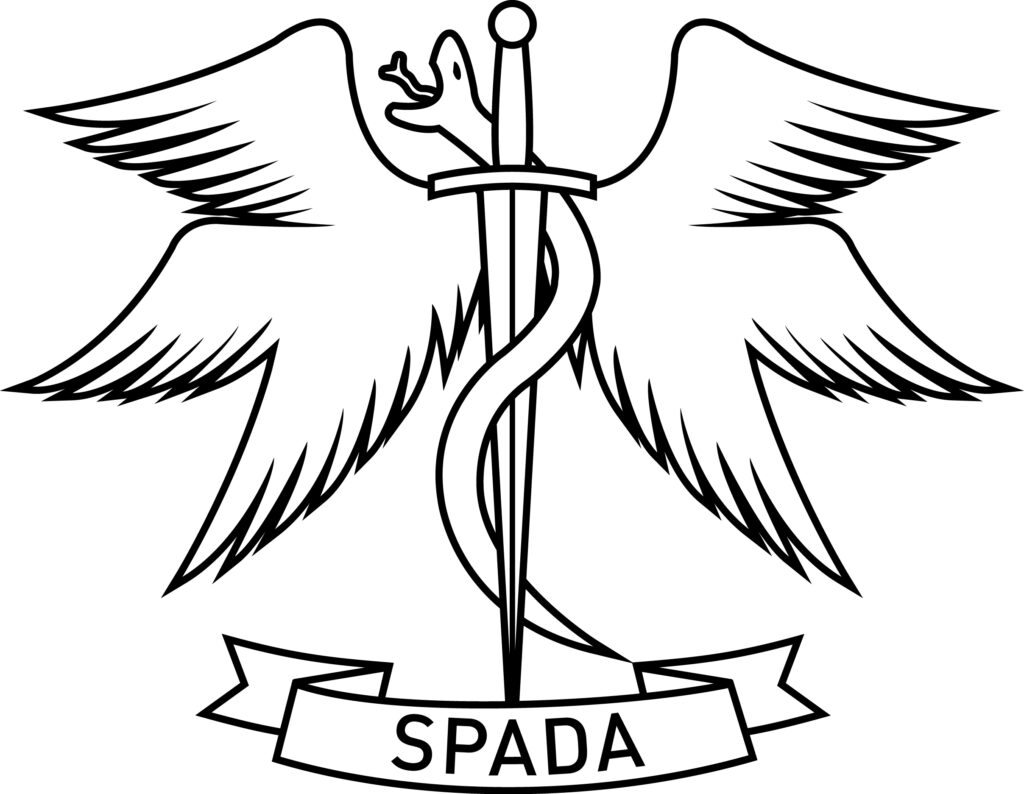
Done precisely to spec, by the excellent Robert Simpson, using digital tools (which graphic designers were up in arms about in the 80s and 90s), and which has now been reproduced thousands of times in printed books and ebooks.
Which one is “better”? That really depends on what you want. They are both exactly what I asked for and are both excellent.
The real question is, who benefits from all this progress?
Back in the 80s, one teacher at school was banging on about how, with the new desktop publishing, you could do in a morning what used to take a week. I asked if you’d expect to get the rest of the week off, then? He said no…
And this is how it will go. If you are working for yourself, or it’s your company, then increasing productivity is usually a good thing, up to the point that it decreases the value of your product, and until your competitors become similarly more productive. If you work for someone else, this will just mean that you are expected to produce x times as much, for the same money or less.
In Gates’ article, he wrote:
“When productivity goes up, society benefits because people are freed up to do other things, at work and at home.” (Emphasis mine)
This is the most egregious rubbish. When productivity goes up, people are expected to do more work in less time. End of story. AI will mean either redundancy or more product for the same pay, for most employees affected by it.
Mark Hurst at Creative Good is a technologist who is usefully sceptical of various aspects of the modern techscape, including AI. He makes the point in his article ChatGPT’s dangers are starting to show that the companies involved in AI development are working to “privatise the gains, and socialise the losses”.
One critical area where the law has simply not been written yet is the use of copyright material to train AIs. To my mind, it’s a blatant violation of the rights of the creator to use their work (usually writing or graphic art of some kind) to train a machine to create other art in that style. Creators should have the right to decline such use, or to get paid to allow it, just as they might licence a film studio to make a movie out of their novel. I think it will be extremely difficult to prove what material the AI has used- for instance, any chatbot AI probably has access to every blog post ever written. But those posts are in most cases copyrighted to the writer. How do you prove that the AI stole your work? This is a solvable problem, I just hope that our society does the work to solve it. Making the owners of the AI liable for any infringements would go a long way towards motivating them to program the bot to behave ethically.
I think that dangerous new technology requires some kind of regulation. Cars, for instance. You need a licence and insurance to drive one. With AI, the primary worry is that ignorant people will mistake an algorithm with access to a finite (though very large) database for the arbiter of truth. And unscrupulous people will use AI to manipulate us into buying more stuff we don’t need, or voting for the wrong people. These are genuine concerns, but I am more concerned with the people who will become redundant, because they either don’t adapt, or re-brand, or their specific area is simply no longer needed by anyone. There can and should be some provision for them.
There is nothing inherently moral or immoral in AI. It’s a tool. It can and will be used to make our lives easier and better; and it can and will be used to make our lives worse. This is true for every tool ever made. Swords bring justice and defend the weak. Swords murder the innocent. It’s not the tool, it’s what we do with it. I could brain you with my #7 plane, stab you with a chisel, or use a chunky steel watch as a knuckleduster, which is how Mr. Bond broke his Rolex in On Her Majesty’s Secret Service (the book, not the movie). Though the tools you have access to will tend to guide your choices, whether you're conscious of it or not. When you're holding a hammer, you look for nails. I'm much more likely to joint an edge with my #7 that I am to hit anyone with it.
When I was thinking about getting a new (to me) car back when I lived in Finland, I considered getting a four-wheel drive, because it's that much less likely to get stuck in the snow. I asked a friend who really knows cars, and he said: “with four-wheel drive, you still get stuck, but in worse places”. Tools guide choices.
It's also true that all new technologies have unanticipated, often unanticipatable, consequences, for good or ill. I'm not a prophet, so won't make any predictions about the unanticipatable. But the obvious (to me at least) negative consequence of chatbot AI, like ChatGPT, is that we will outsource our thinking, and so become less good at it. Plato famously decried writing things down as bad for the memory. Folk are continuously ascribing all sorts of things to Plato and others (as Abe Lincoln famously tweeted: don't believe everything you read on the internet), so I'll quote him at length. He puts this story into Socrates' mouth:
The story goes that Thamus [a mythical inventor of writing] said many things to Theuth [a mythical king of Egypt] in praise or blame of the various arts, which it would take too long to repeat; but when they came to the letters, “This invention, O king,” said Theuth, “will make the Egyptians wiser and will improve their memories; for it is an elixir of memory and wisdom that I have discovered.” But Thamus replied, “Most ingenious Theuth, one man has the ability to beget arts, but the ability to judge of their usefulness or harmfulness to their users belongs to another; and now you, who are the father of letters, have been led by your affection to ascribe to them a power the opposite of that which they really possess. For this invention will produce forgetfulness in the minds of those who learn to use it, because they will not practice their memory. Their trust in writing, produced by external characters which are no part of themselves, will discourage the use of their own memory within them. You have invented an elixir not of memory, but of reminding; and you offer your pupils the appearance of wisdom, not true wisdom, for they will read many things without instruction and will therefore seem to know many things, when they are for the most part ignorant and hard to get along with, since they are not wise, but only appear wise. (Source: http://www.antiquitatem.com/en/origin-of-writing-memory-plato-phaedrus/)
He was right, but I think we'd all agree that the loss of memory skill is worth the upside of writing. I think ChatGPT threatens to create a net dumbing effect on its users. Nicholas Carr warned of a similar effect of the internet itself, and most particularly Google, in his book The Shallows: What the Internet is Doing to Our Brains. He was not wrong. I don't know how many times I've explained to my kids that googling a search term is not the same thing as researching a topic. So we should be watchful for any feeling along the lines of ‘I'm too busy/tired/stressed to do this myself so I'll just get the bot to do it'. The main red flag for this is whether something you used to do yourself becomes “too difficult” if you don't have access to the AI helper.
Banning the new technology, as some people whose livelihoods are affected by it are calling for, is never an effective solution. It has been tried over and over again, just about every time a new, revolutionary, technology comes along. Banning nuclear weapons didn’t stop North Korea from getting their hands on them. It simply doesn’t work. I bet the horse-drawn carriage makers did their damndest to get those nasty mechanised car things taken off the streets. Or restricted to the speed of a horse. And guess what? Some carriage makers went into business making bodies for cars, and some people still drive horse-powered carriages for fun. But yes, an awful lot of them just went out of business. I don’t say ‘adapt or die’. But I do say ‘regulate and adapt, or die’.
Personally, as a self-employed swordsmanship instructor and writer, I can see how using AI could help me produce better books, faster, by (for instance) creating outlines, rough first drafts of specific chapters, back-cover blurb, etc. But there is no way for ChatGPT to run a seminar for me, or to conceive of the idea of a new training manual for the Art of Arms. Also, I’m very much at the bespoke, luxury, end of the market. Absolutely nobody has an existential need for a swordsmanship lesson, so automation is not a concern. You can probably tell from the headline photo, in which I'm wearing a vintage hand-winding Roamer watch from the 50s, and using a Record #4 hand plane from the 30s that belonged to my grandfather, that I'm aesthetically always on the side of the old ways. I teach swordsmanship, not shooting.
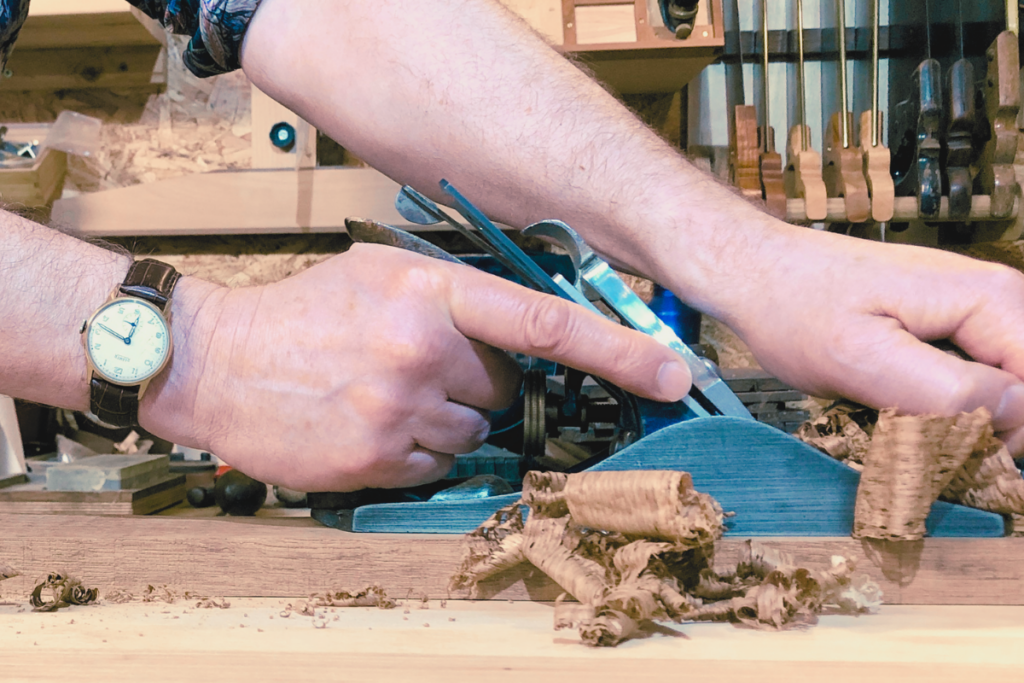
Swords, spears, and bows used to be state-of-the-art weaponry, but were superseded by guns. Swordsmanship and archery devolved into competitive sports (throwing javelins did too), and even twenty years ago there were precious few swordmakers in the Western world. But there has been a renaissance of historical martial arts, and a consequent renaissance in the craft of swordmaking. That doesn’t help those smiths who went out of business a couple of centuries ago, but it does suggest that there will be a resurgence of appreciation for older ways of doing things in the future. It’s hard to think of a technology where this doesn’t apply.
Music? CDs and tapes killed vinyl… but vinyl came back stronger than ever. We now have streaming at the bottom end, and vinyl at the top, with CDs in the middle.
Ebooks were supposed to kill print stone dead… only for print to survive, thrive, and for high-end leather bound editions to become more popular, and more profitable, than ever. Brandon Sanderson’s latest kickstarter, for a leather bound 10th anniversary edition of his Way of Kings, raised just under seven MILLION dollars! (I could get a thousand Breitling watches for that! not to mention a thousand Holtey planes!) But print is dead, right?
Midjourney image generation does not threaten David Hockney, or Lina Iris Viktor. It does threaten folk making a living producing graphics for websites. Chat GPT does not threaten poets like Simon Armitage or Amanda Gorman. It does threaten writers making generic blog posts for other people's websites (who, incidentally, keep pitching me to write completely off-topic crap for this site!).
It’s not my place to offer advice to people in different circumstances to mine (and unsolicited advice is usually obnoxious). But as I see it, if you work in areas likely to be affected by AI, you have two options. Either master the new tool and use it to make your work even better, or brand yourself at the other end of the market. Both work, and both have value. There will always be people looking for the cheapest option, but there will also always be people looking for the hand made option, and who are willing to pay for it.
Further reading:
My brother Richard Windsor blogs about all sorts of tech stuff, including AI, from the perspective of investment advice. You can find his bearish take on GPT-4 here: https://www.radiofreemobile.com/gpt-4-the-law-of-diminishing-returns/
Joanna Penn got me thinking about AI as it affects writers, and she has written about it extensively on her blog, here: https://www.thecreativepenn.com/blog/
Wikipedia article on the “quartz crisis”: https://en.wikipedia.org/wiki/Quartz_crisis
John Harrison, winner of the Longitude prize, and maker of clocks, including all-wood clocks (you can jump down that rabbit hole yourself!): https://en.wikipedia.org/wiki/John_Harrison


